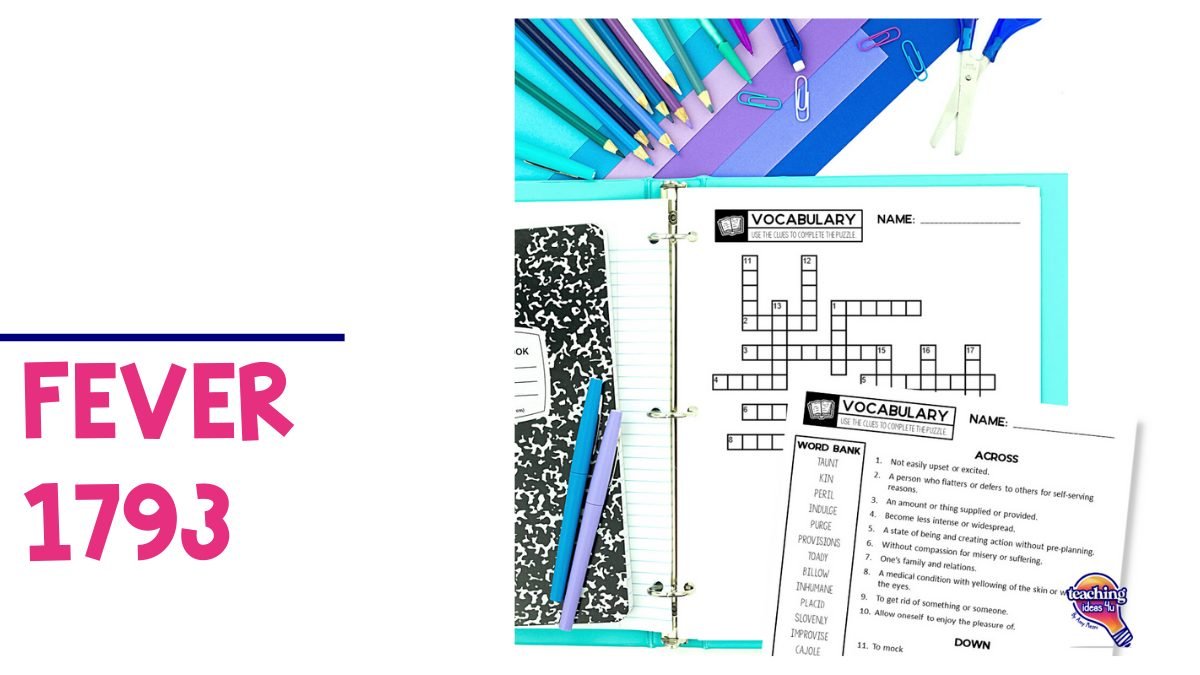Fever 1793
Although teachers always look for new books to read with their students, many of us have a shortlist of favorites they pull out year after year. Fever 1793 by Laurie Halse Anderson is on the must-read list of many middle school teachers. Moreover, students often become engrossed with the plot and go on to read more of Anderson’s books.
This novel is a perfect fit for both English and American history classes. It is generally read in middle school, but it can be read with fifth-grade students with support. (I would read it aloud or use it toward the end of the year.)
Summary of Fever 1793
The story is set in Philadelphia during the New Nation time period. Mattie Cook is a typical teenager who dreams of her future, thinks about boys, and fights with her mother. Mattie’s mother runs a tavern, and she and Mattie rarely see eye to eye. Grandpa lives with them and helps run the tavern. When Polly, the girl that works for them, doesn’t show up for work, Mattie assumes she is off flirting with the boys. Later, Mother discovers that Polly is dead – taken by a quick fever. Soon, many people are passing along rumors of a fever running through the city.
Things get pretty dire for Mattie as she attempts to escape the city for the countryside. Eventually, Mattie finds her way back to the city. Will her family survive? Will they be able to keep the tavern?
What happens to Mattie and her family? The reader follows Mattie as her life changes because of the yellow fever epidemic.
Teaching Fever 1793
Mattie is a very engaging character, and students quickly get swept up into her life. As the yellow fever outbreak becomes more evident in the story, students begin to ask for more reading time – they want to know what happens to her!
Laurie Halse Anderson does an amazing job weaving historical facts throughout the story. It is a very accurate portrayal of life at this time. Although the Cook family is fictional, the events discussed in the story are real.
Now that we have lived through the Covid pandemic, the story will resonate even more with students. In addition to using the novel to teach reading skills and history standards, teachers could have students compare their experiences to Mattie’s.
The story does get a bit dark – after all, a lot of people died in the yellow fever epidemic. Although it is a bit graphic in parts, most kids just want to know what happens next. However, if you have a student that struggles with loss or handling death, the story may be too much. I have used this book with 5th graders toward the end of the year and 6th graders. This is not an easy read, so I do not recommend using it with struggling readers (except as a read-aloud.)
Aside from using the book for text evidence, theme, and vocabulary or tying the novel to history, I recommend teachers use Fever 1793 to explore the following reading standards:
Character Development (CCSS.RL.3)
Fever 1793 is excellent for discussing character development and how events influence characters. Mattie changes a lot from the beginning of the story until the end - the epidemic forced her to grow up quickly. Students can analyze how the setting and events influence the character’s choices.
Author’s Purpose (CCSS.RL.5)
Aside from a terrific plot and engaging main character, the book also has quotations from the time period at the beginning of each chapter. These quotes come from a variety of sources, but all are taken from historical documents. Many students had a difficult time understanding the quotes. However, teachers should focus on them because their meanings often foreshadow events in the story.
Compare & Contrast Mediums (CCSS.RL.7)
I also recommend finding an audiobook version of the story. Students love to hear it being read in a colonial accent!
Fever 1793 Novel Unit
Are you looking for a ready-made literature guide for Fever 1793? My print-and-go unit includes higher-level reading comprehension questions, vocabulary, as well as extension activities.


